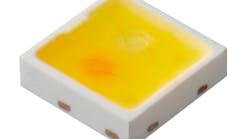The Act authorizes the formation of the Next Generation Lighting Initiative (NGLI), a public-private partnership which could provide up to $50 million annually to develop solid-state lighting.
The NGLI authorizes the US Department of Energy (DOE) to receive a significant level of funding for solid-state lighting, and also instructs the DOE to work closely with industry to ensure that the fruits of its development program are ultimately turned into products that save energy.
At present, the DOE operates a successful Solid State Lighting program, which funds a large number of projects relating to LEDs and OLEDs.
Unlike many activities authorized by the Act, the NGLI is already in good shape; it has already formed an alliance with industry (the NGLIA, or Next Generation Lighting Industry Alliance) and has also signed an Exceptional Circumstances provision covering intellectual property.
The Act requests funding for the NGLI of $50 million per year for fiscal years 2007 (beginning October 2006) to 2009. There is also an extended authorization to allocate $50 million for each of the fiscal years 2010 to 2013.
However, the exact amount of funding that would go to the DOE is set by an appropriations committee. In other words, although the legislation is very supportive of the NGLI, the higher budget is still not yet in place. For fiscal 06, commencing October 2005, the budget is likely to remain roughly flat or increase slightly from the fiscal 05 level of $12.7 million.
Clearly, an increase to $50 million per year would have a significant effect on the scope of the DOE program. Each year, the program holds a workshop (the next is in February 2006), and one of the outcomes of these meetings is a list of priorities for R&D work.
With more funding the program will be able to fund more of proposed R&D projects, and will also concentrate heavily on commercialization strategies. These activities will pace the way for solid-state lighting to hit the ground running when it finally starts to penetrate the general lighting market in a few years' time.




